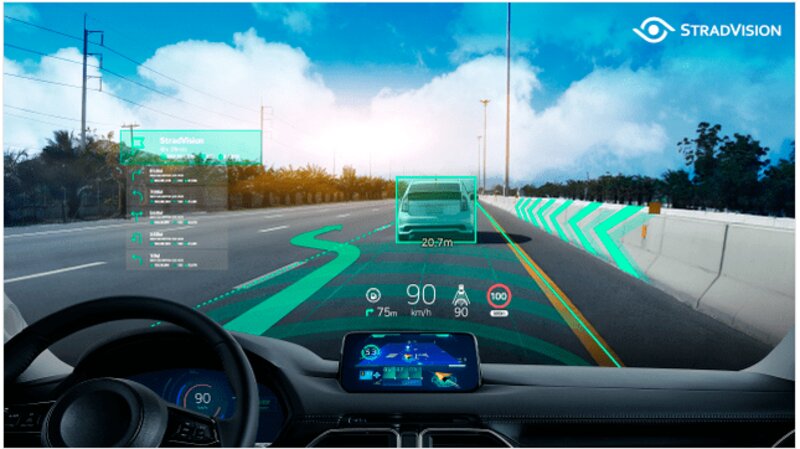
October 03, 2021
Add AR Displays for ADAS Safety
Add AR Displays for ADAS Safety

An AR HUD could do much more than just display operating data such as speed.
By Junhwan Kim | EE|Times | Published September 27, 2021
As the age of autonomous vehicles gets closer, safety and accuracy will be absolutely paramount. Failure will not be an option, as any safety issues that arise with AVs will certainly set back the timeline of their adoption, something that no one in the industry wants to see.
Many key technologies will play a role in how these vehicles become a part of our daily lives and improve safety, including augmented reality head-up displays (AR HUD), the next-generation windshield display technology that improves the safety and quality of the driving experience.
AR HUD projects essential road information such as navigation and various ADAS (advanced driver assistance system) warnings to the windshield, based on data collected in real-time through sensors. This advanced HUD technology allows the driver to keep their eyes on the road, while perceiving their surroundings accurately through real-time interaction with the objects on the road.
Many OEMs are starting to pay more attention to the advantages of AR HUD. They are considering applying it to their various vehicle lineups, and this technology is expected to become a basic requirement for the safe driving of automobiles within a few years.
The current, legacy HUD systems provide only limited information on vehicle driving conditions, such as speed and RPM. The display area is also small, making it difficult to sufficiently occupy the driver’s field of vision in actual driving situations. In addition, the navigation information guides the vehicle’s driving route using arrows sequentially displayed, which can confuse the driver.
Unlike legacy HUD, the next-generation HUD systems will place computer graphics that interact with the driver’s field of vision, allowing critical information to be overlaid directly onto the actual road. Furthermore, this allows the driver’s field of vision to be naturally expanded, which improves situational awareness.
Examples of additional useful information that AR-HUD can provide include:
- Distance to the vehicle in front
- Presence of pedestrians in front and distance to them
- Directions and route to the destination
- Speed limit of the road on which you are driving
AR HUD systems must process vast amounts of data from the road environment in real-time, to project information that the driver can intuitively perceive. This requires complex computing technology to analyze the acquired data rapidly and integrate it with real-world objects accurately. This solution brings the benefits of precise recognition to drivers, which translates into a safer driving experience, in addition to convenience.
These technical benefits become more apparent in the integration with ADAS alerts. Currently, most ADAS alerts are primarily indicated by flashing symbols or audible warnings. This method requires the driver to learn the signals of various ADAS alerts in advance, and recognize and interpret them in real situations. This can cause unnecessary delays in real-world driving, where situational awareness and judgment must be made within few seconds to avoid dangerous situations on the road.
However, AR HUD systems can identify threats by displaying them directly within the driver’s line of sight. In addition, AR graphics are overlaid on real objects so that the driver can immediately recognize the threat and quickly take appropriate action, such as braking against road obstacles. Displaying ADAS warnings in this way significantly improves the driver’s reaction time and situational awareness, especially during night driving or in low-visibility conditions.
Our driving environment is getting faster and more complex. Now, AR HUD is no longer just an option to show off the technological prowess of an automaker or the luxury of a vehicle. The increase in cars and pedestrians and our complex lifestyles force drivers to perceive more objects and information on the road and react to more unpredictable situations.
The AR-HUD needs to be projected over the entire windshield in order to provide powerful functionality. A large HUD that occupies the entire field of view of the driver is required to perfectly provide the driver with ADAS warnings and navigation information for the forward situation.
AR HUD will soon become an integral part of our daily vehicle, and it will make a significant contribution to the safety of drivers and pedestrians, both now and in the future as Autonomous Vehicles become the norm.
— Junhwan Kim is CEO of StradVision, an automotive vision processing software supplier.
Share This Story, Choose Your Platform!
Marx Layne is your competitive advantage.
Your reputation and success are our only concerns.
